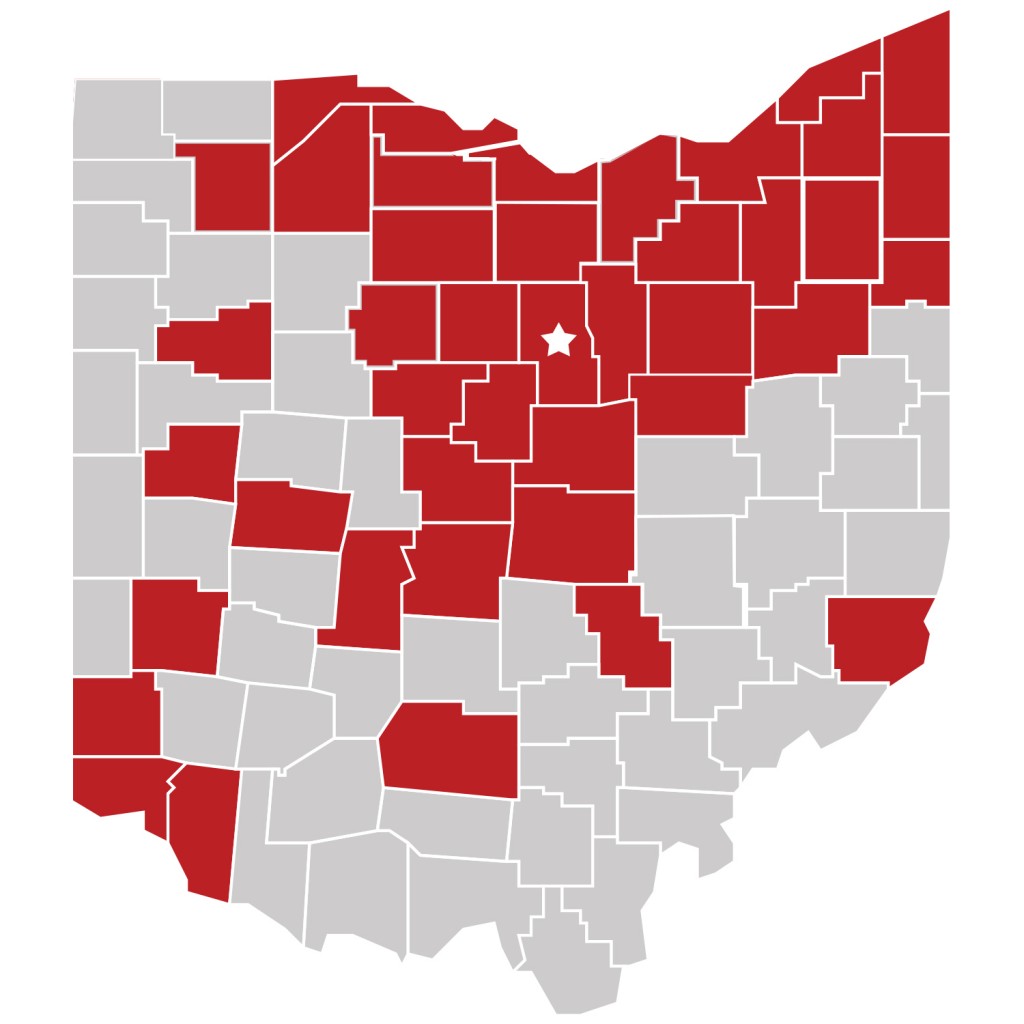
Ohio State Mansfield students in the 2013-14 school year came from 42 of Ohio’s 88 counties. As the demographics change to a more residential campus, more services will be needed.
When Molyet Village first opened to students 10 years ago, the private apartments housed just a few dozen students the first year. The apartments became part of university housing four years later, and are now home to 197 students who attend The Ohio State University at Mansfield.
Molyet’s opening signaled a subtle shift from a commuter campus for students in Richland and surrounding counties to an increasingly more residential campus.
“Traditionally we recruited in a five-county area surrounding Richland County,” said Shari Petersen, director of Admissions and First Year Experience, who has worked in Admissions for 12 years. “However, the addition of on-campus housing was our first opportunity to really begin to expand recruitment efforts and attract students from Northeast Ohio.”
This year, students came to Ohio State Mansfield from 42 of Ohio’s 88 counties, with the largest growth coming from the northern counties. Mansfield Board member Dave Daniels nicknamed the campus “Buckeye North” for its northernmost location relative to other regional campuses, but also to recognize the growing enrollment from the Cleveland, Akron and Canton metropolitan areas.
While Richland County still yields the most incoming freshmen to Ohio State Mansfield (30 percent of the student population), the next largest group came last fall from Cuyahoga County with 16 percent, or nearly 100 students.
“Students come to Ohio State Mansfield because they want to be a Buckeye,” Petersen said. “The benefits they discover are small class sizes taught by distinguished faculty who care about student success and a small college setting that can provide them with a world-class degree that is internationally recognized.”
Faced with an increasing waiting list of students for housing, Dean and Director Stephen Gavazzi worked with University Housing Solutions (which included private developers Adena Corp. and MKC Architects), who now are erecting the first two of five dorm-style housing units along Lexington-Springmill Road that will eventually house 500 students in Buckeye Village.
“The additional housing will allow more students to take advantage of the Mansfield opportunity,” Petersen said. “With the move to a more residential campus, the university has developed a first year experience program to assist students with the transition to college along with bolstering its co-curricular offerings in student engagement, athletics and the arts.”
With the opening of the Ohio State Cleveland Recruiting Center last year in the downtown Cleveland Tower City complex, there are even more opportunities for enrollment growth.
“Jointly we are now able to reach even more students with the one university-many locations message,” Petersen said. “For many students, Mansfield is the best fit.”
A college typically is considered residential if more than 25 percent of the students live proximate to campus, according to Donna Hight, Chief Student Life and Retention Officer. If Molyet Village and Buckeye Village fill available beds this fall, the number of residential students could exceed 32 percent.
Ohio State Mansfield has taken steps to plan for an increasingly residential campus. Bromfield Library and Information Commons is now a vibrant technology-driven learning environment. University Food and Dining services has expanded offerings to include meal plans, and the cafeteria in Eisenhower Hall will undergo a $1 million renovation this winter to make the space more user-friendly, particularly for residential students.
Administrators are seeking funding and community partners to renovate the Campus Recreation Center and Student Union, as well as a partner for student health services.
“I really think it’s an exciting time to come together and have conversations about what a residential campus means to how we serve students,” Hight said.
“A residential campus means you need to provide increased student services like health and mental health care, extended food service hours, gathering places to study, an enhanced health and wellness area with recreation facilities and a modern student union where more lectures, programs and activities mean a more vibrant and rich student experience.”